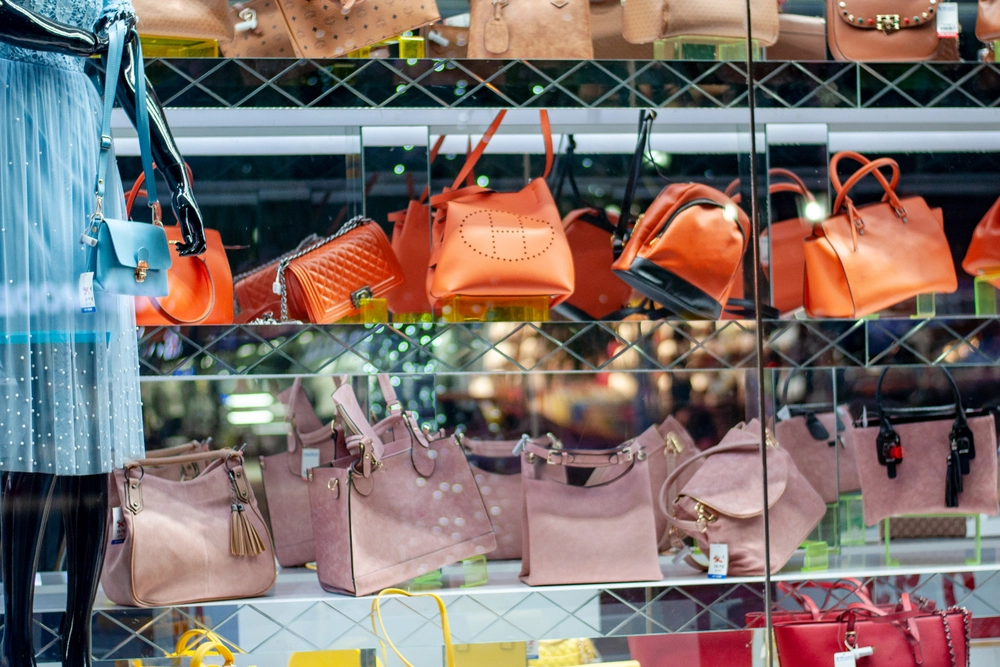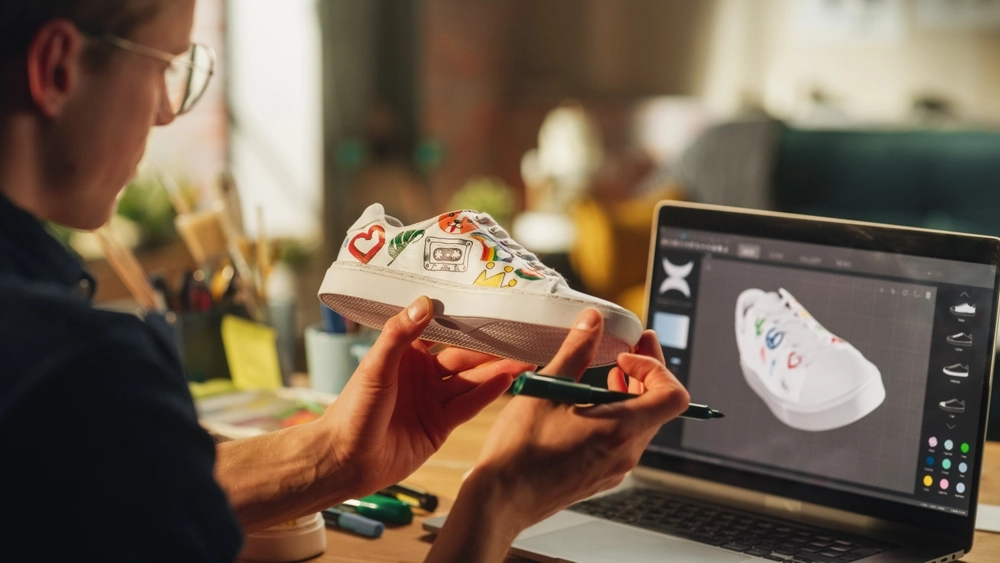
Retail reduced: March 2023

By Nathan Peacey, Jake Christophersen
30 Mar 2023 | 1 minute read
In this month's review of trends in the retail and consumer sector our experts look at Retail in the Metaverse, innovations in technology and how retailers are navigating the economic turbulence.
Firstly, let’s recap what the Metaverse is and how it relates to the retail sector. At a basic level, the Metaverse is a shared space that includes a growing number of virtual environments and models. It includes both fully digital environments and digital enhancements to our ‘real’ world with the help of VR headsets, cloud computing blockchain and other Web3 technology.
To engage in these environments, consumers can crate avatars and interact or transact with each other, often using cryptocurrency. Increasing numbers of retail companies are taking advantage of this, creating unique digital worlds that augment their ‘real life’ products, from Walmart’s digital ‘isles’ to Pacsun’s Mall Rat NFT virtual gallery.
This month, global payment service Worldline launched a new shopping mall within its own Metaverse environment, Decentraland. It will allow merchants, banks and service providers to easily access the Metaverse. The aim here is to provide a virtual environment for retailers to test their impact on Metaverse consumers, with the starter package offering store tenants its payment functions with or without cryptocurrencies and a choice of advertising services.
Another launch into the Metaverse was braved by Alo Yoga. They teamed up with The Sandbox, another virtual world, to unveil a digital collection of Alo wearables, including a tracksuit and bucket hat. The brand has also opened a virtual store offering services such as digital styling, beauty and wellness tutorials together with online exercise classes.
As the cost-of-living crisis continues to bite, retailers are looking for ways of keeping their costs down and freeing up cash for future investment, whether that be for expansion or to further their transformational strategies.
A case in point this month is Asda. In mid-March, the supermarket announced that its owners – the Issa brothers – were conducting a review of the company’s property estate which is worth about £8.6 billion with a view to reducing its debt. This is in light of the ongoing hikes in the interest rates, the latest taking place only last week, when the Bank of England raised interest rates to a 14-year high.
With its review, Asda is considering a sale and leaseback arrangement, where some of its property portfolio will be sold off to a third-party purchaser who will then lease back the property to Asda, allowing Asda to trade as it was, but as a tenant instead. This should allow Asda to create a dent in its piling debt. A similar approach was taken by another of the Issa brothers’ companies, the EG Group, in the US, where the deal in question secured $1.5 billion.
Sale and leaseback transactions are not a new thing in the retail industry and over the years, we have seen other retailers use this method as a way of raising funds. In November 2022, Wilko secured £48 million to invest in their long-term transformational strategy and Morrisons raised £220 million in December last year, to be allocated to financing future investment, as opposed to paying off debt.
There are risks to balance when going down the sale and leaseback route. Although a deal may secure a much-needed cash injection, in the longer term it is important to consider whether the cost of rent will outweigh the immediate gains received through such an arrangement. In any event, it will be important for retailers to seek advice if they are contemplating a sale and leaseback of their property portfolio. Foot Anstey’s property experts can help with this.
Tommy Hilfiger participated in the Metaverse Fashion Week hosted by Decentraland, the world’s first user-owned 3D virtual world, held from March 28 to March 31, 2023. Metaverse Fashion Week can be found in its Metaverse Group Luxury Fashion District and new Fashion Plaza for emerging brands. Brands pay the owners of the different Decentraland areas to set up activations, starting from $5,000. During Metaverse Fashion Week attendees were able to buy featured items using credit cards, and wearables that can be worn outside of Decentraland were sold. Similar to traditional fashion weeks, the Metaverse Fashion Week invited over 50 luxury and digital brands to showcase new collections and host presentations, discussions, concerts, after- parties, and film installations, albeit virtually. A luxury shopping area called the “Boson Portal – Fashion District” has been designed in likeness to Paris’s iconic Avenue Montaigne, where brands can virtually sell both digital and physical items through NFTs.
“When I founded my namesake brand in 1985, I never imagined I’d see a time when fashion weeks would be held in a 3D, fully virtual world. As we further explore the metaverse and all it has to offer, I’m inspired by the power of digital technology and the opportunities it presents to engage with communities in fascinating, relevant ways,” said Tommy Hilfiger. Tommy Hilfiger launched a multi-metaverse hub, launching simultaneously and bringing together, several metaverse platforms, including Decentraland, Roblox, Spatial, DressX and Ready Player Me, all part of Tommy Hilfiger’s Decentraland Metaverse Fashion Week 2023 presence. The aim is to provide an end-to-end shopping journey, reflect the brand’s DNA, with a unique impact on user experience and engagement time.
The 2023 Metaverse Fashion Week was focused on interoperability, where users were able to jump between platforms and have a unified brand experience. The virtual space bore similarity to Google Street View, for ease of user access.
What’s next for Metaverse Fashion Week? Connection with web2 communities it seems! Instagram, the fashion industry’s biggest platform, is still being left out of the conversation. A connection between Metaverse Fashion Week and Instagram would be an interesting update for 2024’s Metaverse Fashion Week, bolstering brand marketing that much further.
According to the Office for National Statistics (“ONS”), last month retail sales increased by 1.2% compared to January. This is welcome news for retailers and is significantly higher than the expected 0.2% rise predicted by economists.
The real winners were discount department stores and second-hand shops, whereas pubs and restaurants experienced somewhat of a decrease, with consumers tending to eat at home more. We question whether this may change, especially for pubs, given the announcement in Jeremy Hunt’s Spring Budget that pubs will be unaffected by the 10.1% rise in alcohol duty (based on the Retail Price index) – in fact, draught beer in pubs will be 11p cheaper than in supermarkets.
Although the increase in retail sales volume is a welcome improvement, the ONS has also noted that overall volumes were down by 3.5% compared to February 2022 and 0.3% quarter-on-quarter. With the cost-of-living crisis continuing to rage on, it is only to be expected that consumers are choosing to spend their money more strategically and it is anticipated that this will continue for some time yet. But as Tesco would no doubt agree – “every little helps.”
Prada Group will use the Adobe Real-Time Customer Data Platform to combine existing data, with the aim of creating unified customer profiles and delivering personalised experiences across any channel in real-time. For example, a person who has researched a bag online may be invited to see the bag’s latest sizes or colours in person, where a sales assistant will be ready to provide a data driven experience. By unifying data across online and in-store interactions, retailers are increasingly looking to tailor the consumer experience.
Consumer data is further being harnessed in a new partnership between Ocado and The Trade Desk. Brands will be able to unlock insights from Ocado behaviours, such as targeting people who are regular buyers of certain products. This direct access to customer a data comes during a period of increased privacy regulation, namely the introduction of the UK Introduces Data Protection and Digital Information (No. 2) Bill on 8 March. Ocado, however, believe the disclosure is future-proof due to the data being an ‘opt-in’ option for customers. We will be watching developments in this area closely.
Adidas has received hundreds of offers for its mountain of unsold Yeezy shoes designed by Ye, the artist formerly known as Kanye West. Since the first Yeezy Boost 750 shoe dropped in February 2015, his Yeezy brand became a defining force in the sportswear industry and an incredibly lucrative cornerstone for Adidas.
Adidas broke off its nine-year partnership with Ye in October because of his antisemitic remarks. The move proved costly for the German sportswear maker, who warned that it could suffer its first annual operating loss in more than three decades this year, mostly because it may have to write off the entire range of Yeezy-branded clothing and sneakers. Writing off its remaining Yeezy inventory than attempts to sell it would mean forgoing $1.3 billion in revenue this year. Its CEO Bjørn Gulden would prefer to just get rid of them entirely but is struggling to figure out how to do it.
The company initially said it would continue to sell the Yeezy line, but stripped of the Yeezy name and branding. However, Adidas CEO is considering other options. Gulden said he’s received over 500 offers to buy the existing Yeezy stock, but said he believed it “would not necessarily be the right thing to do. I think the goal that we have is to do what damages us the least, and that we do something good,” Gulden told analysts during the company’s earnings call earlier this month.
With news of singer Beyonce and Adidas ending their four-year-old clothing and shoe line partnership early, questions remain whether Adidas will be able to find a celebrity partnership to replace the Yeezy line. The Beyoncé breakup won’t impact Adidas’ bottom line to that same degree “because Ivy Park has never been a material revenue driver,” said David Schwartz, an analyst for Morningstar Research. “The main takeaway from this situation is that it highlights Adidas’ inability to find a celebrity partnership that is anything close to the relevance of Yeezy.” Swartz explained.











